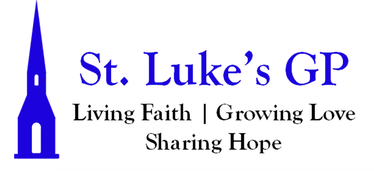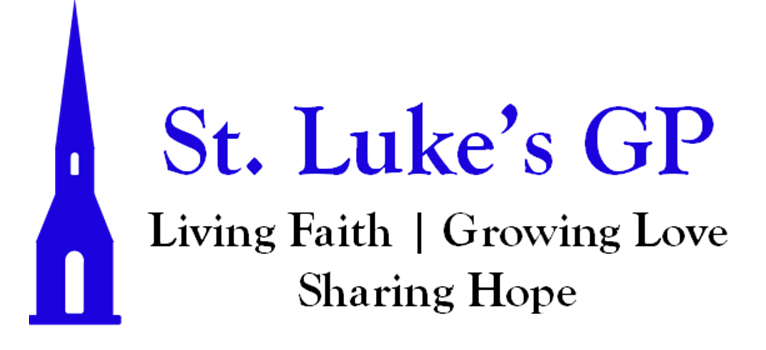|
Scripture Readings: Acts 2:14a, 22–32 | Psalm 16 | 1 Peter 1:3–9 | John 20:19–31
“This Jesus God raised up, and of that all of us are witnesses.” In this brief sentence from the book of Acts, St. Peter actually offers us an excellent account of what it means to be the Church: that is, to be a community of witnesses in the world of God’s raising up of Jesus. There are of course many things we do as the Church, many worthwhile and essential activities that Christians regularly take part in, such as worship, prayer, compassionate service, fellowship, and so on. But all of these activities, all these ‘things we do’ as the people of God find their deep unity and purpose just here: in forming us to be witnesses of the resurrection of Christ, and the new creation the Living God is bringing about in Him. From the day of Pentecost, when St. Peter first uttered these words, all the way to today, the Christian Church exists in order to bear witness. Its more than what we do, it is really who we are. But what does it mean for us to be this kind of a witness? One helpful way to unpack this might be to compare the difference between a ‘witness’ and a ‘bystander’. At a basic level, to be a witness means to testify… to tell the truth about something that one has come to know. And in so doing, their own story gets tied in and tangled up with this wider story. What they have experienced and come to know has made an impact on their life, and they are now compelled to share it as truthfully as they can. A bystander, on the other hand, may have shared the very same experiences, may have seen and heard the very same things as our ‘witnesses’, and yet for whatever reason the event does not take hold of them in the same fashion. For the bystander, it all remains a private experience. It may end up being a profound, disturbing, or inspiring experience, to be sure, but they are not compelled to share in, and share, what has happened with others, and so it remains an isolated and incidental part of their history. In short, unlike the ‘witness’, the ‘bystander’ remains outside of the story. This is a very rough sketch, I know, but I believe it can help us clarify something that has often been muddied in our society. By and large we have become used to thinking about and living our faith in essentially private ways, and the idea of being more ‘public’ with it makes many deeply uncomfortable. Images immediately come to mind of pushy, arrogant, and self-righteous know-it-all's, or those who use religion for political or selfish gain. Clearly, this kind of ‘public faith’ is miles away from the Way of Jesus, and thankfully there are much more faithful ways to live Christian-ly in the world. But as comfortable as we might feel living as spiritual bystanders, to follow the Way of Jesus Christ is to become a witness: one whose whole life is draw into the Story of what God has done in raising Jesus Christ from the grave, and who is tasked with making this known to the world as truthfully as they can. Our Scripture readings this morning talk much about believing and faith, and the narratives (both from Acts and John’s Gospel) tell of the early disciple’s first steps as a witnessing community. In our Gospel reading the story picks up on Easter evening. Just before our reading, in verse 18, we can find the very first account of someone being sent as a witness with the Good News: “Mary Magdalene went and announced to the disciples, ‘I have seen the Lord’; and she told them that he had said these things to her.” And in response… they gathered together and locked their doors in fear of persecution. Maybe not the most courageous or noble first step, I know, but that didn’t stop the Lord’s world-changing plans for them. And maybe we can identify with their fear and hesitancy too. Maybe we can easily see ourselves following their early ‘lead’. But the same Lord who transformed these fear-filled disciples back then remains the Lord of the Church today, and that should give us hope. For rather than leave His people to fend for themselves, the Risen Lord arrives. The Good News they’d hear from Mary is suddenly present in their midst: Jesus really has risen!… and although that means re-imagining the entire story of the world, they come to believe and know this to be true. Well, most of them did at least. Poor Thomas missed the party that night, and now he finds all his friends backing up Mary’s story… all claiming to have seen their beloved master Jesus alive again. But rather than take them at their word, Thomas responds by demanding the same experience the rest of them all had: to see for himself the presence of the Risen Lord. Despite the best attempts of the rest of the witnessing disciples, Thomas remains resolute in his resistance. But then, just as before, when they had all gathered together, the Risen Lord shows up and graciously comes to Thomas, inviting him to stop doubting and believe. Christ does not turn Thomas away for not believing until he had seen Him raised for himself, but along with Thomas we are told: “Blessed are those who have not seen and yet have come to believe.” Now turning to our reading from Acts, we hear a portion of St. Peter’s speech to the crowds gathered in Jerusalem for the feast of Pentecost. This is the same St. Peter who, not long before, was resistant to Mary’s message until the Risen Lord Himself appeared among them alive. This is the same St. Peter who, along with the others disciples, could not convince Thomas, one of their own number, that the Good News was true… until the Lord again showed up and stirred up Thomas’ faith. This same St. Peter now stands in front of thousands of faithful Jews, from all over the ancient world, and tells them the truth about Jesus. Empowered by the Holy Spirit, he tells them the story of how the One they had crucified was truly their Messiah, and that God had raised Him from the dead, and raised Him up in glory. This time we are told, if we read a bit further, that about three thousand people believed (verse 41), and stepped into the Church’s story with their lives as well. From there, the Church continued to grow and spread all through the world, as more and more people believed the Good News of the Risen Lord, and shared what they had come to believe and know with their world. There are just a few points I think I should highlight before drawing to a close. First of all, witnessing to the reality of the resurrection is not simply about sharing information, but rather of living in such a way that its truth becomes believable. We can say all the ‘right things’, but if our choices and actions and lives don’t line up, we are undermining the message we have all been entrusted to share. On the other hand, if our lives are in line with the world-changing reality of Christ’s resurrection, then our words will be too, and will also likely be needed to help others understand why we now live the way we do. It’s not a question of prioritizing resurrection ‘words’ or ‘deeds’; they both belong together, like so many things in life. Second, though we’re all called to be witnesses, to tell the truth about the Risen Lord through our entire lives, it is ultimately God who makes use of our witness to enable people to believe. As our Scripture texts today attest, faith is not always a straightforward path, and those that eventually believe may still have a long journey ahead. The disciples first doubted Mary, then Thomas doubted the other disciples, but the Risen Christ still used their faithful witness. True faith cannot be forced, for it is a gift from God, and each of us may arrive at that gift and receive it in a different way. After all, how did we first come to the Church? We each have a unique story, but in some way each of us responded to the message of Jesus Christ as it was expressed and lived out by others in our lives. We believed their witness, and joined in this Story along with them, and have each grown and learned a whole lot along the way. Though we did not see the Risen Lord with our own eyes as the first disciples did… we believed their testimony, which has been the story of the Church’s life throughout the centuries. And now we too are witnesses… our lives now have this purpose: to point to the truth of Jesus’ resurrection, and to help others to share in the New Creation that the Living God is bringing about through Him. And finally, for most of us this won’t mean standing up in front of a crowd of thousands… but what about a crowd of one… or two, or three? Honestly, what would it look like to be faithful to our calling to be witnesses of the resurrection of Jesus Christ first of all in our own homes? With our next-door neighbours? Our closest friends? Our spouses? Ourselves?It certainly doesn’t look like being pushy, or arrogant, self-righteous, manipulative, or defensive… but what might it look like to live as those who believe the Good News of Jesus? Patience? Forgiveness? Asking for forgiveness? Gentleness? Courage? Hope? Trust? In the resurrection of Jesus Christ, God is bringing about His New Creation, and He offers us His Holy Spirit to bring it to life in us. Like St. Peter and all the rest, though we stumble, and struggle along the way, our Risen Lord is still with us as we seek to make Him known. So may we continue to believe, and hold fast to the hope we’ve been given, and may we discover anew what it means to take part in this Story with our whole lives… so that our world “may come to believe that Jesus is the Messiah, the Son of God, and that through believing” they too “may have life in his name.” Amen.
0 Comments
Your comment will be posted after it is approved.
Leave a Reply. |
Rev. RObRev. Rob serves as the Priest-in-Charge at St. Luke's Gondola Point, and as the School Chaplain at Rothesay Netherwood School Archives
June 2024
Categories
All
|
|
5 Quispamsis Road, Quispamsis NB, E2E 1M2
Mail to: 12 Quispamsis Road, Quispamsis NB E2E 1M2 |
Contact Us
Parish Phone: 506-847-3670 | www.stlukesgp.ca | www.facebook.com/StLukesGP/ Rev. Rob: 506-608-1772 | [email protected] |
Proudly powered by Weebly


 RSS Feed
RSS Feed
